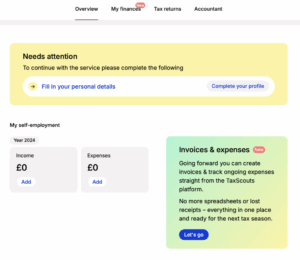Shielding Your Pension from Inheritance Tax
Smart Strategies with Annuities and Life Insurance
Inheritance Tax has long been a concern when you are looking to pass down your wealth, but pensions have traditionally been an exception as they are not normally subject to Inheritance Tax.
However, the UK Government’s recent Budget announced that from 2027, pensions will be subject to Inheritance Tax.
This marks a significant change in your estate planning, as pensions represent one of the largest assets for many individuals.
It gets worse, as explained in my recent video. Deaths after age 75 could mean that your beneficiaries also face paying Income Tax on withdrawals from your pension as well as Inheritance Tax.
As a result, substantial amounts of pension wealth may now be lost to taxes unless you take proactive steps.
At this moment in time, the economic conditions may suit one potential strategy to mitigate this tax liability by using a combination of a pension annuity and a whole of life insurance policy.
This can be a great solution for those that don’t really need their pension (as they have other income) or are happy to receive a small regular income from their pension.
This article explores how this approach works, the benefits and drawbacks, and key considerations to ensure compliance with HMRC rules.
The Impact of the 2027 Pension Rule Changes
Under current rules, pensions are typically outside of an individual’s estate for Inheritance Tax purposes. However, the new rules mean that upon death, pension funds will be included in the estate and taxed at the standard Inheritance Tax rate of 40% on amounts exceeding the nil-rate band (currently £325,000, or up to £500,000 when you include the residence nil-rate band for those passing their home to direct descendants).
For many retirees, their pension is one of their most valuable assets.
If pensions are now subject to Inheritance Tax, it means a significant portion of these funds could be lost to tax, reducing the amount passed down to beneficiaries.
So we know this creates a pressing need for alternative estate planning strategies.
Using a Pension Annuity and Life Insurance to Avoid Inheritance Tax
One way to avoid Inheritance Tax on pension wealth is to use the pension to purchase a pension annuity.
A pension annuity converts the pension pot into a guaranteed income for life, removing the lump sum from the estate and, therefore, its exposure to Inheritance Tax.
But now this means there is no pension sum, it’s gone because you’ve used it to purchase an income for life.
So if you still want to leave the value of your pension pot to your loved ones you could use a whole of life insurance policy.
Here’s how It works:
#1 Purchase an Annuity – You use your pension fund to buy an annuity, which provides a fixed or increasing income stream for life.
At the time of writing, due to rising costs of government borrowing meaning higher gilt yields, annuity rates are at their highest for over 14 years.
Making it one of the best times to put this strategy into action.
 Source: Retirement Line
Source: Retirement Line
#2. Excess income used for Whole of Life Insurance – If the annuity generates more income than you need for daily expenses, the excess can be used to fund a whole of life insurance policy.
#3. Trust Arrangement – The whole of life insurance policy is written into trust, ensuring that the payout is outside of the estate for Inheritance Tax purposes.
#4. Beneficiaries Receive Tax-Free Payout – Upon death, the insurance payout goes directly to beneficiaries free of Inheritance Tax, effectively replacing the lost pension wealth.
Let’s look at some real-life numbers.
Currently, at the time of writing, a 65 year old male with a £1million pension pot could take out £250,000 as a tax free cash lump sum and then purchase a single life, level, no capital protection annuity with the remaining £750,000.
The gross income per year would be £54,549 which eventually nets down to £40,483 after taxes assuming the person’s only other income is their State Pension.
They could then take out a guaranteed whole of life insurance policy paying out £750,000 on death into a trust outside of their estate for a fixed yearly premium of £14,760.
So even after paying for the life insurance policy, this person is still left with £25,723 net income per year.
The major downside of this solution that the £750,000 is not protected from inflation and won’t be worth the same in real terms as it is today.
It’s the same for the level annuity income. As this is fixed the income will actually buy you less and less as the years go buy.
One way to solve this issue is to use an inflation linked annuity and whole of life insurance.
Using same scenario as above, the gross inflation-linked annuity would be £35,942 per year, £28,753 net.
A £750,000 inflation linked whole of life insurance policy would cost £14,760 per year.
Crucially both the annuity income and the payout from the insurance policy would rise by inflation each year.
This is also the case with the premiums.
Annuity research – 29/01/25
Advantages of This Approach
- Removes Pension from Estate – Once the pension is used to purchase an annuity, it is no longer part of the estate, and therefore, not subject to Inheritance Tax.
- Tax-Free Payout to Beneficiaries – The whole of life insurance, when written into trust, provides a tax-free payout to beneficiaries.
- Guaranteed Income for Life – The annuity ensures financial security, as income is paid for the rest of your life, regardless of market fluctuations.
- Avoids Potential Future Tax Changes – Future governments may introduce further taxes on pensions, so taking action now could protect against additional levies.
- Potential for Enhanced Annuities – Some individuals with health conditions may qualify for enhanced annuities, which provide a higher income due to reduced life expectancy.
- Protection Against Investment Risk – Unlike pension drawdown, which remains invested and subject to market fluctuations, an annuity provides stable income.
This solution of course wont be right for everyone and there are a number of disadvantages.
- Inflexible Income – Once an annuity is purchased, the income is fixed apart from a small cost of living rise if this option is taken. Unlike keeping the pension pot in drawdown, it does not allow for adjustments based on financial needs.
- Potential Loss of Control – You give up access to your pension capital, meaning you cannot make withdrawals beyond the annuity payments.
- Insurance Costs – Whole of life insurance policies can be expensive, particularly if taken out later in life.
- Lower Death Benefits from Annuities – Annuities generally do not provide a lump sum payout to beneficiaries unless a specific guarantee period or joint-life option is chosen.
Avoiding the Back-to-Back Plan Issue
A key risk in this strategy is falling foul of HMRC’s back-to-back planning rules.
HMRC considers a back-to-back arrangement to be one where the annuity and life insurance policy are set up with the primary intention of avoiding Inheritance Tax.
To ensure compliance:
- The life insurance should not be directly linked to the annuity purchase.
- The insurance premiums should be paid from general income, rather than structured as a direct redirection of annuity payments.
- The insurance policy should be taken out separately and ideally at a different time to the annuity.
- The annuity should be chosen based on income needs rather than solely as an Inheritance Tax avoidance tool.
- Professional tax and financial advice should be sought to ensure the strategy is implemented correctly.
Is This Strategy Right for You?
This strategy is particularly beneficial for individuals with large pension pots who want to ensure their beneficiaries receive the maximum possible inheritance.
However, it may not be suitable for those who require flexibility in their retirement income or who are unable to afford the premiums of a whole of life insurance policy.
Financial circumstances, health status, and overall estate planning objectives should all be taken into account when considering this approach.
Seeking advice from a qualified financial planner or tax specialist is crucial to ensure the strategy aligns with personal and family financial goals.
Additional Considerations for Estate Planning
Beyond the annuity and life insurance strategy, you should also explore other estate planning techniques to reduce Inheritance Tax liability:
- Gifting Assets – Regular gifts to family members under the seven-year rule can reduce taxable estate values.
- Trust Planning – Setting up discretionary trusts can help shield assets from Inheritance Tax while retaining some control over distributions.
- Business and Agricultural Relief – If applicable, these reliefs can provide significant reductions in Inheritance Tax liabilities.
- Maximising the Residence Nil-Rate Band – Ensuring that property passes efficiently to direct descendants can help utilise this exemption.
With the upcoming changes to pension taxation in 2027, estate planning has become more critical than ever.
Using a pension annuity in combination with a whole of life insurance policy written into trust presents an effective way to shield pension wealth from Inheritance Tax.
Especially whilst annuity rates are relatively high.
However, careful structuring is essential to avoid HMRC’s back-to-back planning rules.
The best thing to do is diversify your planning approach and use a combination of strategies including annuities, life insurance, gifting, and trust planning to minimize tax exposure and maximize legacy benefits.
By taking proactive steps now, you can safeguard your wealth and provide for your beneficiaries in the most tax-efficient manner possible.



